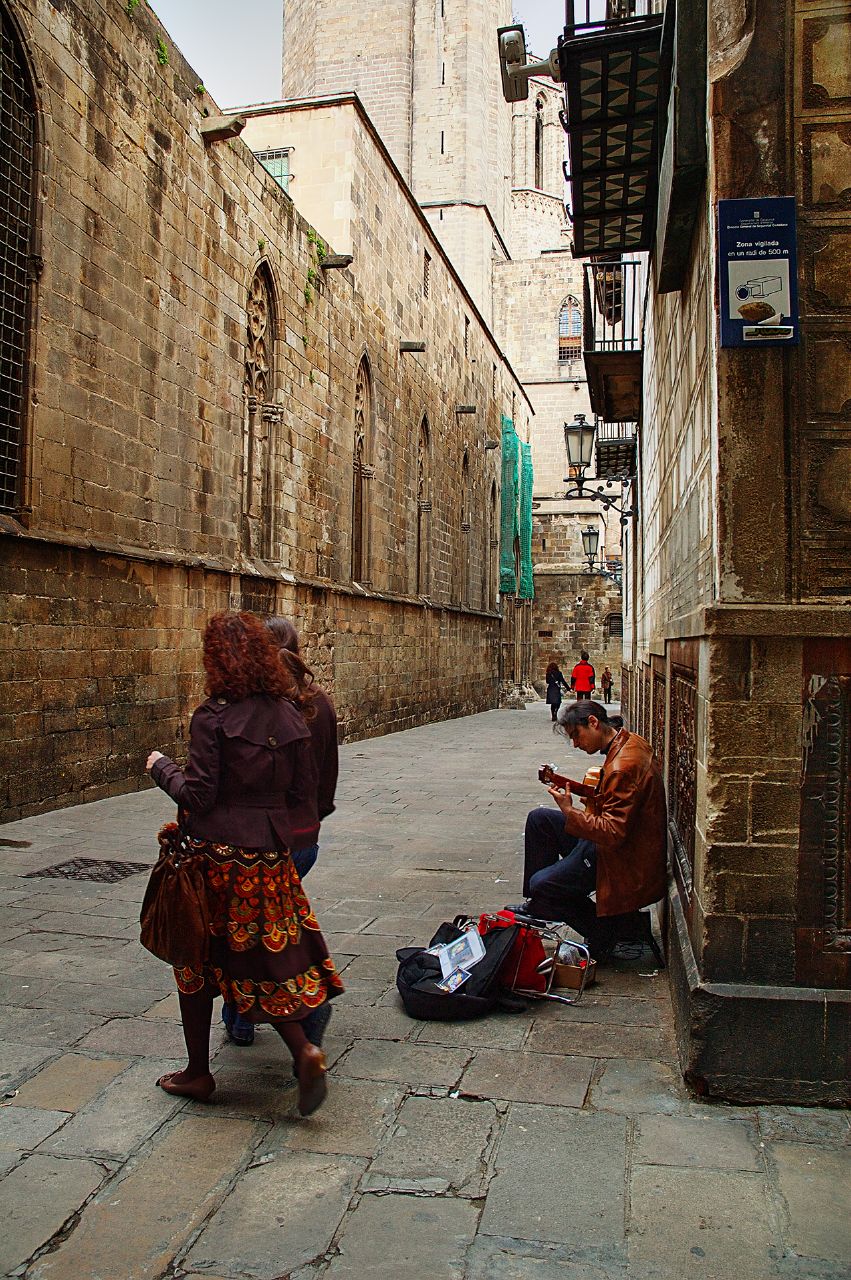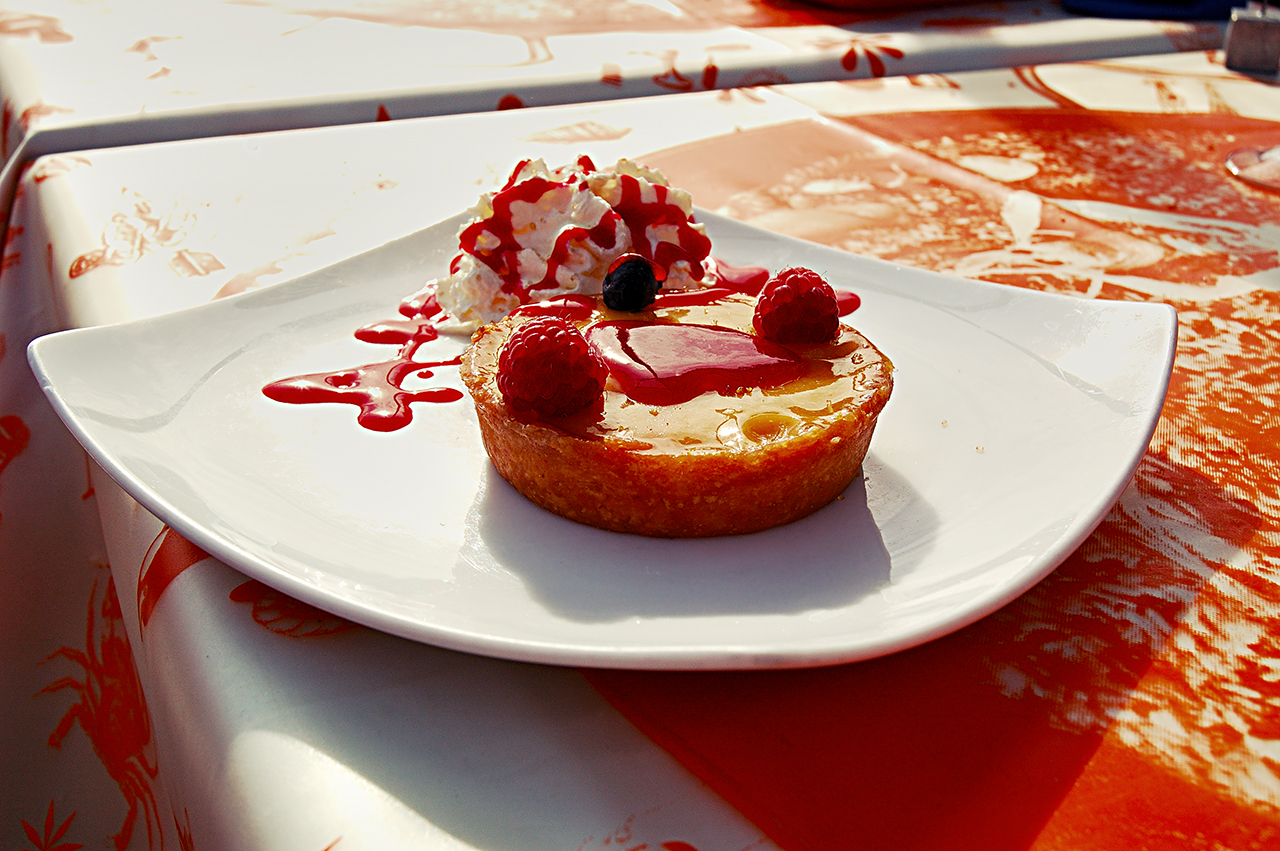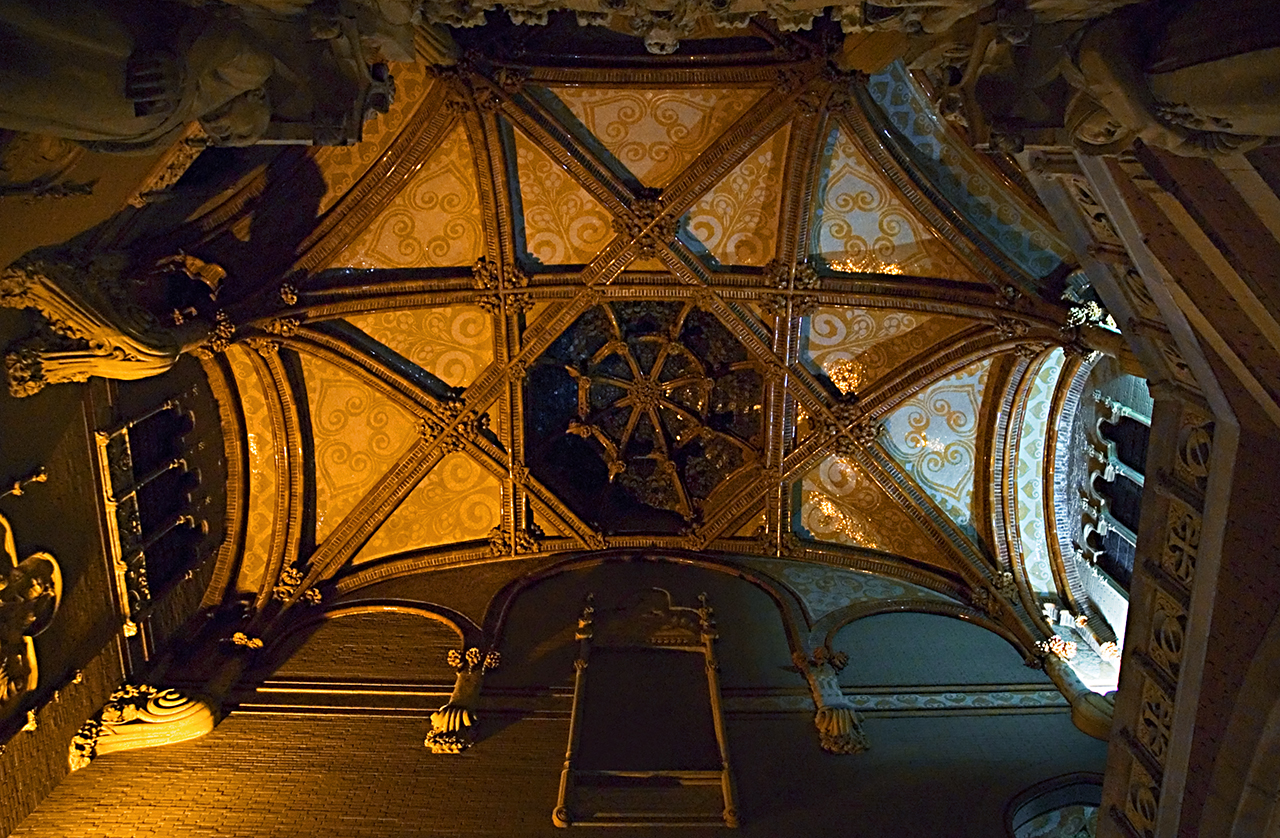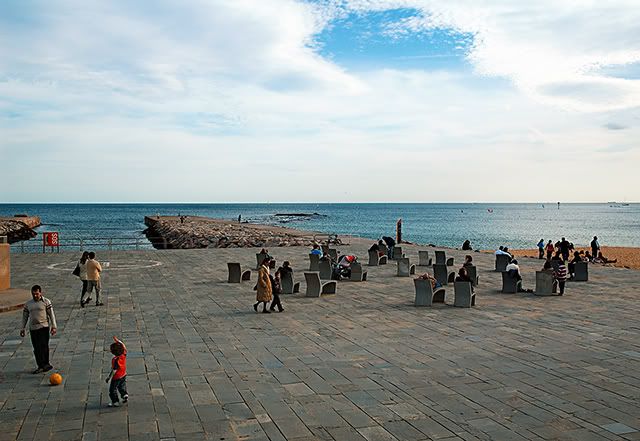Barcelona photos: Daily photographs of Barcelona, Spain. Pictures of a modern city with travel tips in a personal photoblog. A photography and travel site. Art, architecture, people and traditions. Travel to Barcelona through my camera, know more about our city and towns nearby. Welcome!
Wanna be featured?
March 11, 2007
FC Barcelona - Real Madrid Fever At Las Ramblas, Barcelona
March 10, 2007
The Pillars of Catalan Art Nouveau or Modernisme, Palau de la Musica, Barcelona

In times of industrial expansion, growth of the local bourgeoisie and increasing opposition to Castilian rule a movement of artistic revival or Renaixença comes to life.
An intellectual and cultural development expressed in music, poetry, theatre, newspapers, visual arts, politics or architecture known as modernisme appears.
This sort of "anxiety" about being modern, inspired by France and other European cultural powers, became a generational fight to detach from the conservative society still anchored in the imposed manners of the early eighteenth century Bourbon dynasty.
If you manage to climb on top of the neighboring buildings and take a good picture just let me know how you did it!
March 09, 2007
Juicy Barcelona
March 08, 2007
Bush in Flames
March 07, 2007
Iberians: On the Track of my Ancestors
© All Rights Reserved
What do you see? An intense blue, some tiny trees and stones, silent stones. How old can these stones be?...Here I am leaning on a crumbling wall and pointing with my camera at the horizon pretending in vain to see the same my ancestors saw from this very spot at some other time. Maybe, who knows, they were fearing that invaders showed up at any moment behind those walls. My body, a microoscopic drop of water in this weird universe is standing right now in Pre-Roman "Spain". I am touching the foundations of an Iberian town buried here for hundreths of years. These rocks have witnessed so many things!...if only they could tell me. A complete village surrounded by two defensive walls in the middle of a vast valley in the Catalan province of Lleida or Lltirta in early Iberian times. The exact place: El Molí d'Espígol (Tornabous, Lleida)
March 06, 2007
Monument to the Martyrs of 1809
© All Rights Reserved
This is the Monument to the Martyrs of 1809, at Garriga i Bachs Square in the Gothic Quarter (Barri Gotic) of Barcelona. It honors the memory of men executed during Napoleonic occupation (see Napoleonic Wars). The bronze sculpture was made by Josep Llimona and the wall relief by Vicenç Navarro in 1941.
PS: By the way I hope FC Barcelona players don't look as dead and cold as these statues when they visit Liverpool tonight to stay in the Champions League tournament.
March 05, 2007
Almond Tree Flowers in the Early Spring
© All Rights Reserved
To start the new week a refreshing image of the fast upcoming spring: an almond tree as taken yesterday somewhere in Catalonia. Notice that the flowers are not mere blossoms but they are fully grown. It has been a spring day, a hot spring day in fact as I had to wear a T-shirt for a while. I hope these almond tree flowers give those of you enduring a bad weather something to dream on in the meantime. Hey, this is intended to make you happy not to make anybody feel envious!
March 04, 2007
Lichen on An Ancient Rock
© All Rights Reserved
This lichen was growing on an ancient rock. Of course you can't tell how old the stone is but it is very old as it is part of the foundations of an Iberian town. The Iberians were living in this part of Europe long before the Romans came to "civilize" them. I will show you the ruins some time this week. For the moment, I just wanted to share the texture with you.
March 03, 2007
Sardana Player Blowing the Horn in Barri Gotic, Barcelona

March 02, 2007
Sardana Dancers in Front of Barcelona Cathedral

March 01, 2007
Barri Gotic, Barcelona: Street Musicians Paradise?

February 28, 2007
Barcelona Restaurants: Delicate Desserts at Escriba's
 |
| Raspberry Tartelette |
I didn't know whether to photograph this delicate dessert at Escribá's, the famous restaurant by the beach in Barcelona, or devour it mercilessly. I think I will keep it somewhere safe in my digital photo album just in case someone needs this tart picture for the dessert menu.
Being in front of the sea in the afternoon, having a good paella and picking up the most tempting dessert from an assorted selection on a tray is like mana from the gods.
February 27, 2007
Catalan Modernisme: Ceiling at Sant Pau Hospital, Barcelona

February 26, 2007
Sitting by the Sea: Take your Turn

February 25, 2007
Social Distortion
© All Rights Reserved
History repeating itself, deja vu, retro? Fashion comes and goes and the clothes of the fathers are now the "innest" stuff for the sons. Did that make us social distorted too then? Who is behind this design? A drinking skeleton, is that what they should become or are they referring to the state parents are in now after going on too many boozing sprees? Too many questions I know but I have been always intrigued by fashion and youngsters' striving for being completely distorted...hmmm, what a wonderful times we had!
Update: People portrayed in this picture has nothing to do with what is expressed as my own personal opinion in this article. This post has provoked different reactions, possibly because I am no expert as you can see in this matter. I was only referring to youth and fashion. In order to avoid misinterpretation and some wild opinions clearly out of place, comments will remain closed and those already accepted hidden. Sorry for any inconvenience this may cause to visitors or any people implied.
February 24, 2007
Spanish Souvenirs in Barcelona: A Canned Stereotype
© All Rights Reserved
Of course a souvenir shop always tries to sell stereotyped products of the country or the city as this is precisely what tourists are prone to buy, unaware of other traits that you normally discover after a second or third visit. Spain is a multicolor, multilanguage, multiethnic and multi-everything nation and what is good for some parts of it is not applicable to the rest. It is a common cliché to think that we are all matadors, go around saying "ole" (we do but watching soccer matches) and dance flamenco in our spare time. Of course there are people for each and every ingredient in this melting pot, but remember not to mingle them no matter how idyllic it may look.
February 23, 2007
Absinthe Tête - à - Tête
Absinthe and its Relationship with Artists
Absinthe is a highly alcoholic distilled spirit that has been associated with many notable artists and writers over the years. With an anise-flavored bitterness and purported psychedelic effects, absinthe has developed a reputation as a mysterious, dangerous, and addictive drink linked to creativity.
The Origins of Absinthe
Absinthe originated in Switzerland in the late 18th century. It is derived from botanicals including the flowers and leaves of Artemisia absinthium ("grand wormwood"), green anise, sweet fennel, and other medicinal herbs. The ingredient wormwood contains thujone, which was believed to be responsible for absinthe's purported effects. Modern scientific analysis has shown the thujone levels in authentic absinthe to be far lower than early estimates and unlikely to cause hallucinations. Nonetheless, the mystique and air of taboo created by these unfounded controversies contributed to absinthe's reputation as an intoxicant for artists and writers.
In the 19th century, absinthe grew in popularity and became ingrained in café culture in France. It was nicknamed "la fée verte" (the green fairy) and often featured in Impressionist paintings. Absinthe's high alcohol content (45–74% ABV) and role as an inexpensive recreational drink contributed to its popularity among young bohemian artists and writers in the late 1800s.
Controversy and Bans
At the turn of the 20th century, absinthe became controversial and was blamed for psychiatry issues, criminal behavior, and corrupting youth. Critics pointed to its frequent consumption by creative misfits as evidence of its potential dangers. The powerful wine industry also spread concerns about absinthe to help curb competition. This led to bans in many European countries starting in the early 1900s.
As mentioned above, Thujone was thought to cause psychedelic effects and was cited as the reason for absinthe's hazards. However, modern analysis shows thujone levels were too low to cause such effects.
Relationship with Artists and Writers
Many influential creative figures of the late 19th and early 20th century in France consumed absinthe, adding to its cultural mystique. Prominent artists like Edgar Degas, Henri de Toulouse-Lautrec, and Pablo Picasso depicted absinthe in their works, often focusing on its relationship to bohemian café society. Henri de Toulouse-Lautrec famously drank absinthe daily and it served as inspiration for his Postimpressionist paintings of café interiors.
Noted absinthe drinkers among the literary set included Charles Baudelaire, Arthur Rimbaud, Paul Verlaine, and Ernest Hemingway, who drank it daily while writing in Paris. Many are the paintings that make reference to absinthe. This association of absinthe with avant-garde writers and artists enhanced its perception as a creative elixir.
While many artists openly used absinthe, letting it influence their works, experts today dispute the notion that it has psychedelic properties inspiring unconventional thinking. The effects were likely stupefying rather than mind-opening. However, the aura of illicitness gave absinthe an alluring reputation for writers and artists going against the grain creatively.
Modern Revival and Consumption
Starting in the 1990s, revised EU laws led to a resurgence of absinthe as studies showed it was no more dangerous than other spirits. Traditional distilling methods revived, leading bars and distilleries to sell premium, authentic absinthe. The drink became popular once more, especially among creative communities drawn to its legacy.
Contemporary absintheurs have moved away from the bohemian excesses of the past. While absinthe retains its aura of creativity and decadence, devotees today focus more on savoring its flavors. In parts of France and Switzerland, absinthe rituals include dripping ice water over a sugar cube atop a slotted spoon into the spirit. This gradually dilutes and brings out complex herbal tastes.
Legacy in Art and Culture
Regardless of absinthe's actual effects, its green fairy mystique endures as a symbol of creativity, danger, and early counter-culture. The impassioned artists who embraced it continue to fuel absinthe's cultural legacy. For instance, the play "Picasso at the Lapin Agile" fictionalizes Picasso and Einstein meeting in a Parisian absinthe bar in 1904, discussing genius and creativity.
References to absinthe persist in popular culture today, from movies like Moulin Rouge to paintings, songs, and literature. While regulated and safely consumed now, absinthe's aura of unconventionality pioneered by 19th century artists maintains its allure today. The drink's rich history ensures it endures as a creative muse inspiring continued fascination and works of art.
February 22, 2007
Francesc Cambó Monument in Via Layetana, Barcelona
© All Rights Reserved
Today I show you the statue of Francesc Cambó by Victor Ochoa (1997). Cambó was the founder of La Caixa, one of the most powerful banks in Spain. The monument is just in front of the savings bank headquarters in Via Layetana, a 1917 building by Enric Sagnier. I have found this page called Barcelona Virtual with a pano of the little square and some other interesting 3D tours. It is just another sculpture but I liked the way the omnipresent pigeon added proportions to the statue in absence of other references in the image.
February 21, 2007
Modernist Letterbox at Casa de L'Ardiaca, Barri Gotic
 |
| Letterbox, Casa de L'Arcadia, Barri Gotic, Barcelona |
Off we go in an imaginary trip along the streets of Barri Gotic (Gothic Quarter).
You are facing Barcelona Cathedral, climb the stairs and turn right on a narrow street called Santa Llúcia.
Suddenly you are right in front of Casa de l’Ardiaca, the Archdeacon's house. The building where the Municipal History Archives are since 1921, is made of two houses, being the other the Deacon's house or Casa Degá.
The first buildings date back from the XII century and were remodeled into a palace by Lluis Desplà, the Archdeacon, in 1520.
As a curiosity we should say that it was built against the Roman wall which you can see from the ground floor and that the interior patio lodges the famous fountain (used for Eucharist) with the floating egg known as l'Ou com balla in Catalan. On the façade of the Flamboyant Gothic palace we can admire this marble letterbox created by the Modernista architect Lluis Domenech i Montaner commissioned to decorate the building in 1902.
February 20, 2007
Barcelona Cathedral: Stained Glass Window
© All Rights Reserved
This is one of the stained glass windows that can be admired inside the Barcelona Cathedral or Cathedral of Santa Eulàlia which I will resume soon with a more representative image and some historical background. In the meantime take a look at this appetizer, a little noisy perhaps, but with some intense colors.
